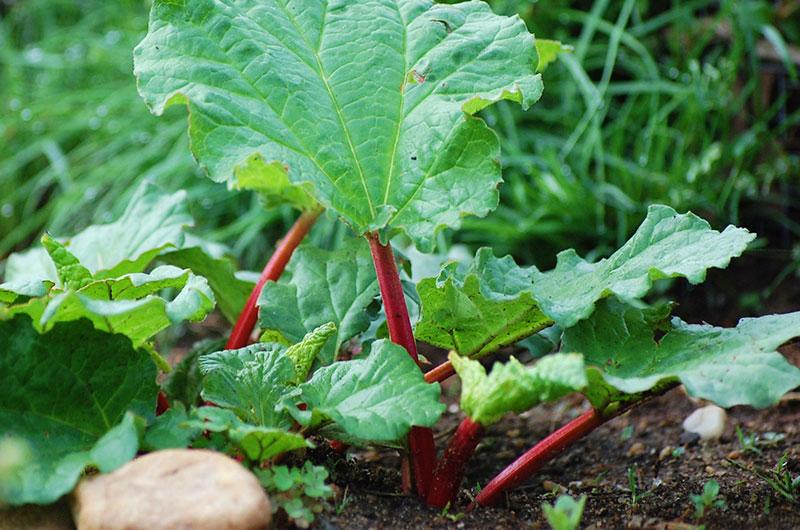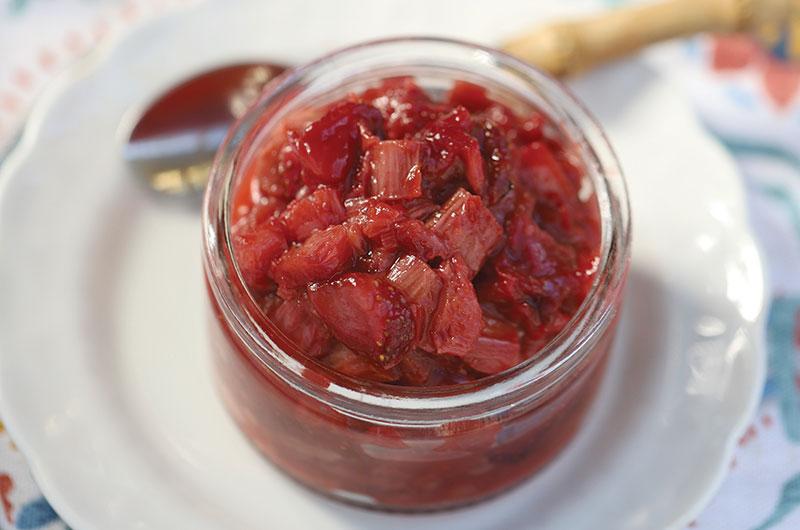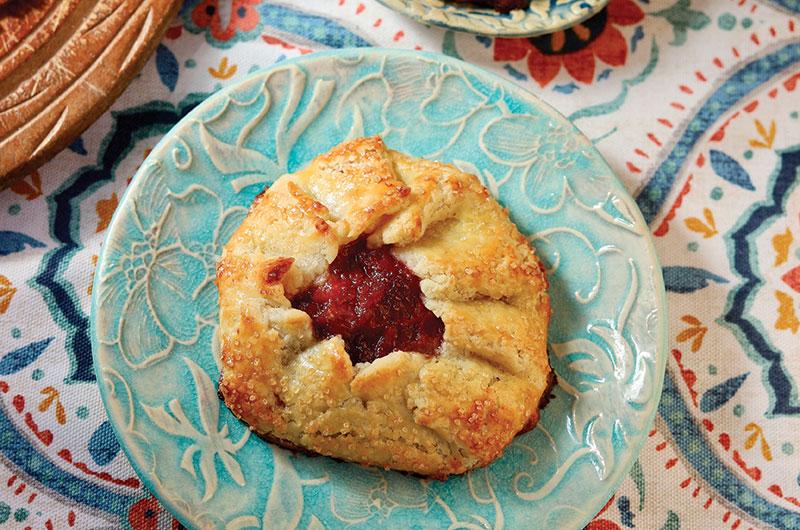In the spring of 2008, I found myself trespassing around Morning Glory Farm in Edgartown. What can I say? I was new to the Vineyard and didn’t yet understand farm etiquette. And someone had told me there was a stash of freshly cut asparagus for sale in a greenhouse somewhere.
This was before the farm store stayed open year-round. While I traipsed around, I found a beautiful herb garden – proof as far as I was concerned that visitors were welcome. And then, up ahead, a greenhouse (what I would now call a high tunnel or hoop house). Running alongside of it was a long row of the most luxurious looking leafy shrub. What was this thing that looked this good in April? I bent down to peek and realized that hiding under the canopy of greenery were pale pink and red stalks of – yes, rhubarb. With the sunlight filtering through the leaves, the dappled light turned the stalks into a fairy forest of candy canes.
I whipped out my Nikon Coolpix. (Don’t laugh; this was also before everyone’s phone took pictures. At least I had enough sense after a few short months on the Island to carry some kind of camera with me everywhere.) I poked under the leaves and around the stalks, my heart set on capturing the joyful beauty hidden within. (I did not whip out a pocketknife and nip off a few stalks of this vegetable-masquerading-as-a-fruit.)
Right then I decided I would grow rhubarb. And for the next twelve years I planted rhubarb everywhere I lived and farmed, and just as I did with my ambitious asparagus patches, I left them behind before they could mature into robust plants. Rhubarb plants can live a very, very long time (My friends in Maine have plants their great-grandmother planted along a stone wall eighty years ago!), so my rhubarb babies are probably thriving all over the Island – except for the two I stuck in a dry, rocky spot and never weeded. They don’t like competition and they love a rich compost-y soil.

Now that I’ve put my stakes down in the glorious wilds of oak-scrubby West Tisbury, I am starting over with plants gardener Tom Hodgson gave me. This is year two (or three – I think the-year-that-wasn’t was somewhere in there) and they look decidedly stalkier than last year. And leafier. And, oh, about those leaves: like all beautiful things, there’s a dark side. The leaves have a high concentration of oxalic acid, which can cause kidney failure, so you absolutely want to leave them to look pretty in the garden but not bring them in to hang around the kitchen – or get near anyone’s plate.
The same goes for the rhubarb flower, but in this case you could certainly bring it inside to put in a vase for decorative purposes. Regardless of whether or not you plan to enter the Ag Fair with your rhubarb arrangements, you definitely want to cut the flowers off so your plants put more energy into growing long stalks.
Though I never harvested a lot of rhubarb from my own plants, when I was a farmer, our neighbor across the field would stop by with basket-loads of stalks for us to sell at our farm stand. This was the same neighbor who would drop oysters and clams at our back door from time to time. I made sure he stayed supplied with pints of cherry tomatoes and salad greens.
Some of that rhubarb did not get sold – it went into my kitchen, along with our own strawberries, and into strawberry-rhubarb crisps (with lots of ginger) and sometimes a pie. It went into muffins and quick breads too. I made rhubarb–dried cherry chutney and rhubarb syrup to add to drinks. But most often I extended the life and enhanced the somewhat tart flavor of rhubarb by roasting it with strawberries, both of them diced and tossed with maple syrup, orange juice, and a bit of balsamic vinegar before cooking. Rhubarb contains a lot of moisture, which is why I prefer roasting to stewing; it allows the water to cook off while the rhubarb pieces maintain some integrity. The jammy result – what I call Roasted Rhubarb-Strawberry Compote – could hang out in my fridge for a bit and was just as good on pancakes and biscuits as it was on vanilla ice cream.

In recent years I’ve played around even more with the compote, using it to fill mini rustic tarts, or even hand pies, and layering it with whipped mascarpone cream and buttery graham cracker crumbs to make trifles and fools. (A fool is an English dessert where mashed fruits are swirled into whipped cream or custard.)

This is all very well and good except when one’s husband is caught red-handed eating the compote straight out of the jar (the pretty jar, no less – the one I thought I would fill and admire for a bit before spooning it out judiciously). Sigh. You might want to make a double batch.







